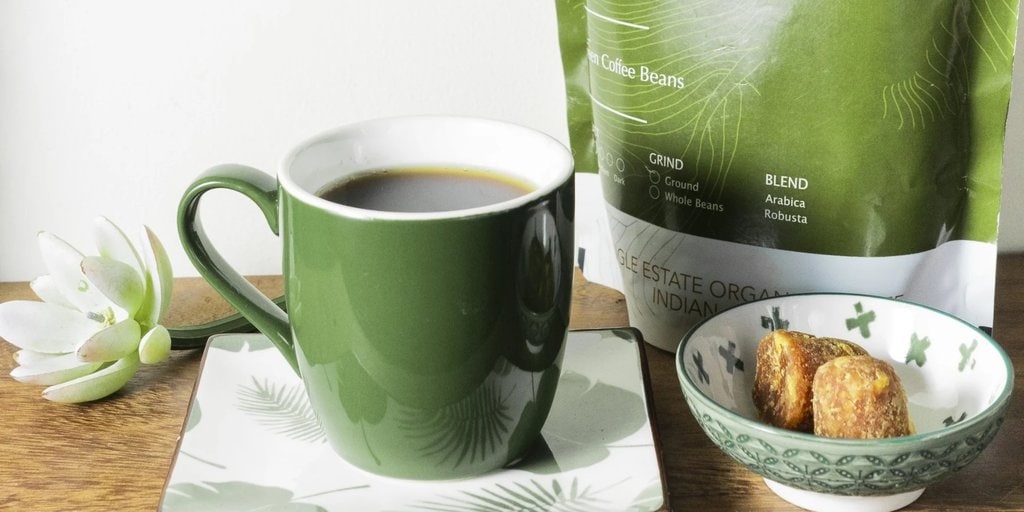Drawing upon her certifications, Mandy Naglich stands as a seasoned connoisseur adept at discerning flavors and articulating her palate’s observations. One of her findings says that the color of the mug people use can make their coffee taste better. This can all be found in her new book, How to Taste: A Guide to Discovering Flavor and Savoring Life.
Mug Color Affects Taste Perception

Naglich’s literary endeavor amalgamates her expertise with meticulous research bolstered by her journalistic background. The book features interviews ranging from scientists to sommeliers, and the overarching objective of Naglich in it is to empower individuals to become more discerning tasters and contemplate the nuances of flavors that grace their palate.
For those with a profound appreciation for gastronomy, a focal point in life revolves around the realm of food. The constant contemplation of the next meal, weekend culinary endeavors, or aspirations of exploring delectable restaurant offerings engross the mind incessantly.
At the core of this epicurean journey lies the pursuit of taste, a pivotal aspect that prompts one to ponder if altering one’s palate perception and discovering novel avenues for savoring culinary delights will be a worthwhile endeavor. Mandy Naglich dissects the intricate dimensions of taste brilliantly, offering insights into refining one’s tasting abilities.
Tastes Interact With Each Other

How to taste is all about the multisensory aspect of taste, extending beyond the mere physical presence of substances on the tongue. It involves a synergy of all the sensory inputs going beyond taste and smell. It reveals how to include touch and sight into the mix, and even pay attention to sound. Visual elements like interior décor and the color of a mug, among other visual cues, can profoundly influence taste perception. Research shows color associations with flavors like red evoking sweetness and green reminding of sourness. Sourness, though less sought after, contributes to coffee’s depth. So, sipping coffee from a green mug can enhance the perception of complexity and sourness.
Naglich addresses the impact of reduced nasal moisture during air travel. Aircraft cabins have exceptionally dry air, drier than the Mojave Desert, leading to decreased nasal mucus production. Interestingly, mucus is crucial for conveying olfactory cues to receptors in our noses, affecting scent perception, which constitutes 80% of taste. In-flight dryness results in food tasting more bland. Naglich recommends drinking water and using a travel humidifier upon arrival to expedite nasal moisture replenishment, restoring tasting capabilities post-flight.

The book explores fundamental taste sensations and shows how salty, sour, sweet, bitter, and umami interact with each other. Saltiness can suppress bitterness; seasoning a radicchio leaf with salt reduces its bitterness. Mustard’s sour and slightly bitter notes intensify cocoa flavors in brownies, enhancing richness akin to adding coffee to chocolate cake recipes.
Mushroom Coffee Sounds Strange. How Does it Taste, Though?

The benefits of mushrooms are well known. Their earthy flavor and nutrient density make them a great meat alternative. Mushroom coffee replacements are wonderful while not being obvious. They’re popular with folks who want to cut caffeine or drink coffee without bitterness, jitters, or energy collapses.
Is Mushroom Coffee New?
You could be forgiven for assuming that mushroom coffee is just the latest trend in wellness, given how it has become hot; however, this is not quite the case. Back when coffee beans were in short supply, Finland’s population used mushrooms as a coffee replacement.

Numerous health advantages of mushrooms are preserved in coffee form. Along with a variety of vitamins and minerals, they are renowned for their antioxidant capabilities. In addition, the adaptogens in mushroom coffee might help maintain a healthy level of cortisol, which can reduce stress. While more thorough research on mushroom coffee is required, the immunological and cognitive benefits of the vegetable itself are well recognized.
Instructions for Making Mushroom Coffee
Simple instructions for making mushroom coffee include adding 2 tablespoons to your preferred hot or cold beverage and stirring to avoid clumps from developing. It has a fine, powdery texture similar to instant coffee. Combine it with milk and hot water. In the combination, the flavor is the most noticeable. The beverage may have a hot chocolate-like flavor without the overbearing sweetness.
Because mushroom coffee has too little caffeine and some people need as much of an energy boost as possible in the morning, they might not be able to benefit from it. However, if you want to reduce your caffeine intake, this can be the ideal coffee substitute for you.